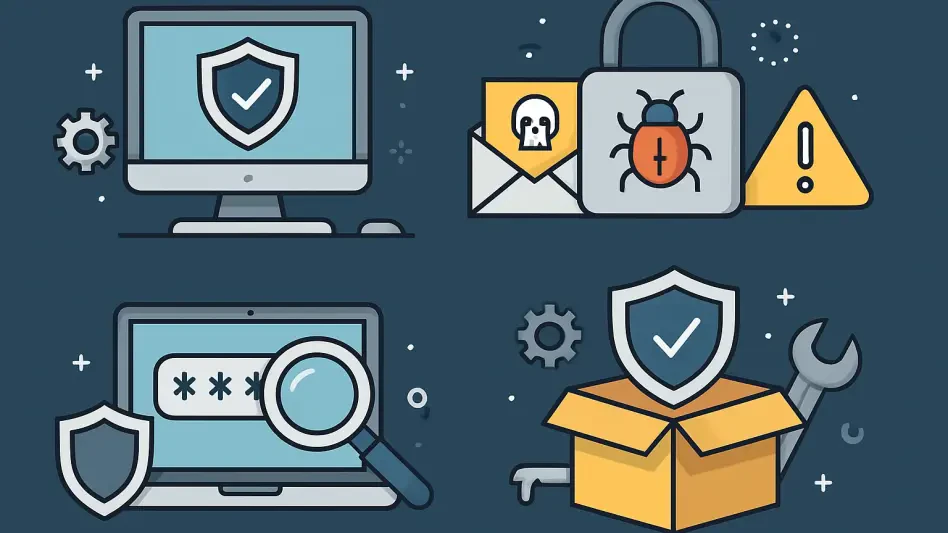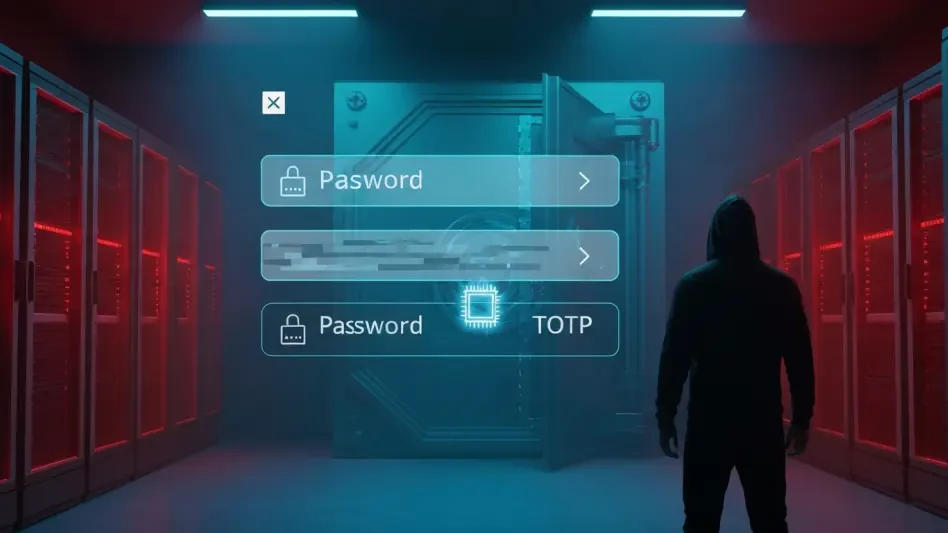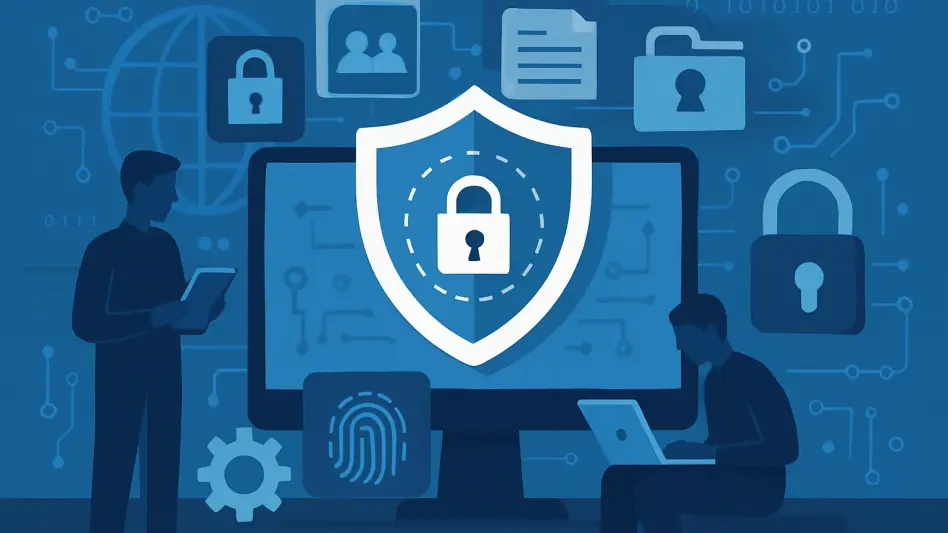In an era where cyber threats are evolving at an unprecedented rate, Managed Service Providers (MSPs) and Managed Security Service Providers (MSSPs) face immense pressure to secure client endpoints against a barrage of sophisticated attacks. Endpoints—laptops, desktops, servers, and mobile devices—remain prime targets for cybercriminals deploying ransomware, fileless malware, and advanced persistent threats (APTs). A single breach can cripple a client’s operations and damage a provider’s reputation irreparably. For MSPs and MSSPs, the challenge is not just about defense but also about managing diverse client environments efficiently while maintaining profitability. This article explores ten leading endpoint protection tools tailored to meet these demands, offering advanced capabilities far beyond traditional antivirus software. Each solution has been evaluated for its ability to combat modern threats, scale with business growth, and integrate seamlessly into the operational frameworks of service providers. From AI-driven automation to human-led threat hunting, these tools address the multifaceted needs of small businesses and large enterprises alike. By delving into their unique features and practical benefits, this guide aims to equip MSPs and MSSPs with the insights needed to make informed decisions, ensuring robust protection for clients while navigating the complex cybersecurity landscape of today.
Why Endpoint Security Matters More Than Ever
In today’s digital environment, endpoint security stands as the cornerstone of a strong defense strategy for MSPs and MSSPs, as endpoints are often the entry point for attackers, making them critical to protect against an array of threats that have grown in complexity. Traditional antivirus solutions are no longer sufficient, as they struggle to counter sophisticated tactics like zero-day exploits and fileless attacks. Instead, advanced technologies such as next-generation antivirus (NGAV), Endpoint Detection and Response (EDR), and Managed Detection and Response (MDR) have become essential for safeguarding client systems. The importance of these tools is magnified by the sheer volume of endpoints that service providers must manage, often spanning hundreds or thousands of devices across multiple clients. A lapse in protection at any single point can lead to cascading consequences, undermining trust and exposing sensitive data. For MSPs and MSSPs, endpoint security isn’t just a technical requirement—it’s a business imperative that directly impacts client relationships and long-term success.
Beyond the technical challenges, endpoint security must align with the operational realities of service providers. Managing diverse client environments demands tools that offer centralized control through multi-tenant management consoles, enabling oversight of vast endpoint networks from a single interface. This capability streamlines workflows and reduces the burden on often understaffed security teams. Additionally, the financial aspect cannot be ignored. Solutions need to support flexible pricing models that fit the recurring revenue structures typical of MSPs and MSSPs, ensuring scalability without eroding profit margins. As threats continue to evolve, the right endpoint protection tool becomes a strategic asset, balancing robust defense with the practical needs of managing multiple clients effectively.
Essential Features for Effective Endpoint Protection
Selecting the right endpoint protection tool requires a focus on features that enhance both security and operational efficiency for MSPs and MSSPs. At the forefront is advanced threat prevention, often powered by artificial intelligence (AI) and machine learning (ML), which can predict and neutralize unknown threats before they cause harm. These technologies are critical for staying ahead of rapidly evolving attack methods that bypass traditional defenses. Additionally, comprehensive threat lifecycle management—covering detection, investigation, response, and recovery—is vital to minimize the impact of breaches. Tools that offer automated remediation and rollback capabilities are particularly valuable, as they reduce downtime and limit damage without requiring extensive manual intervention.
Another key consideration is automation, which significantly reduces the workload on lean security teams by streamlining processes from deployment to routine updates and threat response. Automated processes ensure consistency and speed, allowing staff to focus on strategic priorities rather than repetitive tasks. Visibility and reporting features are equally important, as clients expect transparency and proof of security measures. Customizable dashboards and detailed reports not only demonstrate value but also support compliance with regulatory standards. Finally, integration with existing systems like Remote Monitoring and Management (RMM) and Security Information and Event Management (SIEM) platforms is crucial for creating a cohesive security ecosystem. Tools that seamlessly connect with a provider’s tech stack reduce operational friction and enhance overall effectiveness.
Current Trends Shaping Endpoint Protection
The endpoint security landscape is undergoing rapid transformation, with several trends defining the direction for MSPs and MSSPs. One prominent shift is the increasing reliance on AI and ML to power predictive threat prevention and autonomous response mechanisms. These technologies enable tools to identify and neutralize threats in real time, often without human input, which is a game-changer for providers managing large-scale environments. This trend reflects a broader move toward proactive rather than reactive security, ensuring that potential risks are addressed before they escalate into full-blown incidents. As cybercriminals refine their tactics, such intelligent systems are becoming indispensable for maintaining a competitive edge.
Equally significant is the growing emphasis on human expertise alongside automation in addressing cybersecurity threats. While AI can handle many threats, stealthy and persistent attacks often require human-led threat hunting and response to be effectively managed. This hybrid model, combining machine efficiency with human insight, is gaining traction as a way to address complex threats that evade algorithmic detection. Another trend is the expansion of protection beyond endpoints to include cloud workloads, email, and network security through Extended Detection and Response (XDR). This holistic approach provides correlated visibility across entire IT environments, helping providers manage risks more comprehensively. Additionally, vendors are increasingly tailoring solutions to the specific needs of MSPs, offering dedicated support and pricing structures that align with service provider business models, facilitating growth and profitability.
In-Depth Look at Leading Endpoint Protection Solutions
Among the array of endpoint protection tools available, Sophos Intercept X stands out for its intuitive Sophos Central console, which simplifies management for MSPs and MSSPs. Its synchronized security features integrate seamlessly with other Sophos products, reducing tool sprawl, while its CryptoGuard technology offers patented anti-ransomware rollback capabilities. Powered by deep learning AI, it excels at predicting and preventing unknown threats, making it an ideal choice for providers seeking a balance between advanced security and operational ease. This tool is particularly suited for those who value strong channel support and an all-in-one platform, though the cost of premium features may be a consideration for smaller operations.
Huntress takes a unique approach by prioritizing human-powered threat hunting, supported by a 24/7 MDR team. It excels at detecting persistent footholds and stealthy backdoors that automated systems might miss, making it a valuable addition for MSPs without in-house Security Operations Centers (SOCs). Rather than replacing existing solutions, it acts as an overlay, enhancing proactive defense capabilities. This focus on human expertise fills critical gaps in automation, offering peace of mind for providers aiming to deliver high-level security services. However, its role as a supplementary tool means it may not fully address all endpoint protection needs on its own, requiring careful integration with other systems.
SentinelOne Singularity is renowned for its autonomous, AI-driven protection, minimizing the need for human intervention. Its Storyline™ technology provides a clear narrative of attack events, streamlining investigations for resource-constrained teams. This makes it a forward-thinking option for MSPs prioritizing rapid, machine-speed response and unified management across client environments. With a lightweight agent that ensures minimal performance impact, it suits providers managing diverse endpoints. While its advanced features offer significant benefits, the initial learning curve may pose challenges for teams unfamiliar with such cutting-edge systems.
CrowdStrike Falcon is widely regarded as an industry leader, thanks to its cloud-native architecture and extensive threat intelligence network. The Falcon OverWatch service delivers elite human threat hunting, bolstering proactive defense against sophisticated attacks. Targeted at larger MSPs and MSSPs with the budget for premium services, it offers unmatched effectiveness but comes with a higher price point and potential complexity in mastering its full range of features. For providers serving enterprise-level clients, this tool represents a top-tier choice, though smaller operations might find the cost prohibitive compared to more budget-friendly alternatives.
Additional Standout Tools for Diverse Needs
Check Point Harmony Endpoint offers a consolidated, multi-layered security approach within the Check Point Infinity ecosystem, appealing to MSPs who prefer a single-vendor stack for streamlined procurement and management. Its advanced anti-ransomware and anti-phishing protections are robust against zero-day threats, ensuring comprehensive endpoint defense. This tool is particularly valuable for providers seeking deep integration across security domains, though the broader platform may initially seem complex to navigate. For those committed to a unified solution, the long-term benefits of reduced management overhead often outweigh the early learning challenges.
Bitdefender GravityZone for MSPs combines a powerful security engine with highly flexible pricing tailored for service providers. Its aggregated pricing tiers scale favorably with endpoint volume, supporting MSP growth while maintaining cost-effectiveness. With low system overhead, it performs well even on resource-limited devices, making it a practical choice for diverse client bases. While some advanced features require add-ons, the core offering provides solid protection, positioning it as a go-to for MSPs focused on balancing performance and budget. This adaptability ensures it meets the needs of providers at various stages of expansion.
Trend Micro Vision One extends beyond traditional endpoint protection with its XDR capabilities, correlating data across multiple domains for holistic visibility. Its attack surface risk management identifies vulnerabilities proactively, making it a strong fit for MSSPs and large MSPs managing complex IT environments. Smaller providers, however, might find the full scope of implementation challenging due to its comprehensive nature. Despite this, its ability to provide a broader security perspective sets it apart for those equipped to leverage its full potential, enhancing overall risk mitigation across client networks.
Microsoft Defender for Endpoint benefits from deep integration with the Microsoft 365 ecosystem, often included in licenses for significant cost savings. Its Automated Investigation and Response (AIR) resolves simpler breaches without manual effort, making it ideal for Windows-centric clients. However, its multi-tenancy support lags behind dedicated MSP tools, and it may not be as intuitive for non-Windows endpoints. For providers managing Microsoft-heavy environments, this solution offers unmatched compatibility, reducing deployment friction and aligning with client infrastructure.
Rounding Out the List of Essential Tools
ESET Protect strikes a balance between strong security and minimal system impact, making it an ideal choice for MSPs managing clients with older hardware. Its LiveGuard Advanced Threat Defense uses cloud sandboxing to detect zero-day threats, providing reliable protection without straining resources. While its EDR capabilities may not match the depth of specialized competitors, it remains a dependable option for diverse environments. This lightweight approach ensures that performance isn’t compromised, offering a practical solution for providers dealing with varied endpoint specifications across their client base.
Blackpoint Cyber is purpose-built for MSPs, delivering a live SOC-backed MDR service that reduces operational burden. Its real-time threat response, driven by human experts, minimizes breach impact, making it a high-value choice for providers without internal SOCs. While less customizable than some enterprise-grade tools, its simplicity and focus on MSP needs make it an accessible option for those seeking an all-in-one security solution. This emphasis on reducing complexity allows MSPs to focus on service delivery rather than intricate security management, enhancing client satisfaction.
Aligning Technology with Business Objectives
Choosing an endpoint protection tool involves more than evaluating technical capabilities—it requires alignment with the specific business models of MSPs and MSSPs, ensuring that the chosen solution supports their operational needs. Premium solutions often deliver top-tier defense mechanisms but come with costs that can strain smaller providers. Budget-conscious options, on the other hand, provide solid security at a lower entry point, though they may lack the depth of specialized features. Striking the right balance between cost and capability is essential, as providers must ensure they can offer competitive services without compromising financial stability. Evaluating the total cost of ownership, including licensing and support, becomes a critical step in this decision-making process.
Scalability and profitability further shape the selection of endpoint protection tools. Solutions with multi-tenant management capabilities enable seamless growth, allowing providers to onboard new clients without operational bottlenecks. Flexible licensing models that support recurring revenue structures are equally important for maintaining healthy profit margins. Vendors that prioritize these business needs often stand out, as they enable MSPs and MSSPs to expand their offerings while keeping costs predictable. This alignment ensures that security investments contribute directly to business growth, reinforcing the provider’s ability to deliver value to clients over the long term.
The Synergy of Automation and Human Expertise
Automation has become a transformative force in endpoint security, enabling rapid threat response and minimizing human error. Advanced tools leverage AI to neutralize attacks at machine speed, a crucial advantage in environments where threats emerge faster than manual processes can address them. This capability not only enhances defense but also frees up security teams to focus on strategic initiatives rather than routine tasks. For MSPs and MSSPs managing large endpoint fleets, automated systems ensure consistency and efficiency, reducing the risk of oversight in high-pressure situations.
Despite the power of automation, certain threats require the nuanced judgment of human expertise, especially when dealing with sophisticated attacks designed to evade algorithmic detection. These complex threats demand threat hunting and response capabilities led by experienced professionals. Tools that integrate human oversight with automated defenses provide a layered approach, addressing both common and intricate risks effectively. This synergy is particularly valuable for service providers aiming to offer comprehensive protection, as it combines the scalability of technology with the insight of human analysis. By blending these strengths, MSPs and MSSPs can build a resilient security posture that adapts to the evolving threat landscape.
Leveraging Integration for Operational Success
Integration with existing systems offers a significant advantage for MSPs and MSSPs looking to optimize their security operations. Tools that align seamlessly with widely used ecosystems, such as Microsoft 365, reduce deployment time and management complexity, especially for clients heavily invested in specific platforms. This compatibility minimizes friction, allowing providers to deliver services more efficiently while ensuring a consistent user experience. For environments reliant on specific software stacks, choosing a tool with built-in integration can be a deciding factor in achieving operational harmony.
Broader compatibility with RMM, Professional Services Automation (PSA), and SIEM platforms also enhances a provider’s tech ecosystem. Solutions that connect effortlessly with these tools create a unified security framework, reducing the need for multiple standalone systems and cutting down on tool sprawl. This interconnected approach streamlines workflows, enabling faster response times and more effective risk management. In a competitive market, the ability to integrate smoothly with existing infrastructure is not just a convenience but a strategic advantage, empowering MSPs and MSSPs to deliver superior service while maintaining operational efficiency across diverse client environments.
Moving Forward with Strategic Security Investments
Reflecting on the journey through endpoint protection, it became evident that MSPs and MSSPs had to adapt to a landscape where threats grew more cunning and pervasive, demanding innovative responses. The tools explored provided a spectrum of solutions, from AI-driven automation to human-led expertise, each addressing unique challenges faced by service providers. Their evolution mirrored the industry’s shift toward comprehensive, scalable security that prioritized both defense and business needs. Looking back, the commitment to advanced features like EDR, MDR, and XDR had reshaped how providers approached client protection, ensuring resilience against even the most sophisticated attacks.
As a next step, MSPs and MSSPs should focus on aligning these tools with long-term strategic goals to ensure they meet both current and future needs effectively. Assessing client demographics, operational capacity, and budget constraints will guide the selection of solutions that not only bolster security but also drive growth. Providers are encouraged to explore hybrid models that blend automation with human insight, ensuring no threat slips through the cracks. Additionally, prioritizing integration with existing systems can streamline operations, enhancing service delivery. By investing in tools that offer flexibility and scalability, MSPs and MSSPs can build a foundation for future success, staying ahead of emerging risks while fostering client trust in an ever-changing digital world.








